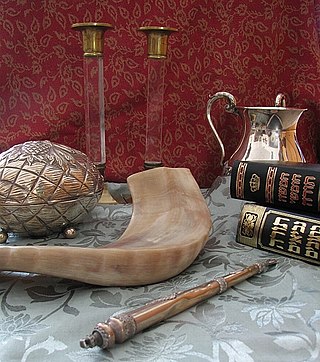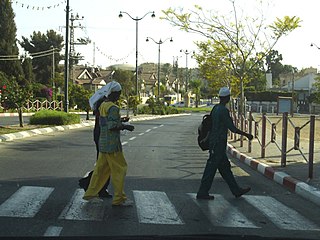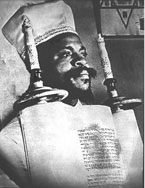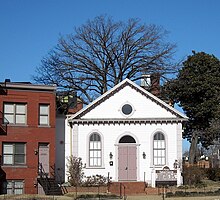Christianity began as a movement within Second Temple Judaism, but the two religions gradually diverged over the first few centuries of the Christian Era. Today, differences of opinion vary between denominations in both religions, but the most important distinction is Christian acceptance and Jewish non-acceptance of Jesus as the Messiah prophesied in the Hebrew Bible and Jewish tradition. Early Christianity distinguished itself by determining that observance of halakha was not necessary for non-Jewish converts to Christianity. Another major difference is the two religions' conceptions of God. The Christian God consists of three persons of one essence, with the doctrine of the incarnation of the Son in Jesus being of special importance. Judaism emphasizes the Oneness of God and rejects the Christian concept of God in human form. While Christianity recognizes the Hebrew Bible as part of its scriptural canon, Judaism does not recognize the Christian New Testament.

Judaism is an Abrahamic, monotheistic, and widely an ethnic religion. It comprises the collective spiritual, cultural, and legal traditions of the Jewish people, having originated as an organized religion in the Middle East during the Bronze Age. Contemporary Judaism evolved from Yahwism, the cultic religious movement of ancient Israel and Judah, around the 6th/5th century BCE, and is thus considered to be one of the oldest monotheistic religions. Religious Jews regard Judaism as their means of observing the Mosaic covenant, which was established between God and the Israelites, their ancestors. Along with Samaritanism, to which it is closely related, Judaism is one of the two oldest Abrahamic religions.

Messianic Judaism is a modernist and syncretic sect that considers itself Jewish. Many consider it a part of the Christian movement of evangelicalism.
The Church of Jesus Christ of Latter-day Saints has several unique teachings about Judaism and the House of Israel. The largest denomination in the Latter Day Saint movement, the LDS Church teaches the belief that the Jewish people are God's chosen people and it also teaches the belief that its members share a common and literal Israelite ancestry with the Jewish people.
Throughout history, various groups of people have considered themselves to be the chosen people of a deity, for a particular purpose. The phenomenon of a "chosen people" is well known among the Israelites and Jews, where the term originally referred to the Israelites as being selected by Yahweh to worship only him and to fulfill the mission of proclaiming his truth throughout the world. Some claims of chosenness are based on parallel claims of Israelite ancestry, as is the case for the Christian Identity and Black Hebrew sects—both which claim themselves to be the "true Israel". Others claim that the concept is spiritual, where individuals who genuinely believe in God are considered to be the "true" chosen people. This view is common among most Christian denominations, who historically believed that the church replaced Israel as the people of God.

African Hebrew Israelites in Israel, officially known as the African Hebrew Israelite Nation of Jerusalem, is a spiritual community which is now mainly based in Dimona, Israel, whose members believe that they are descended from the Twelve Tribes of Israel. The community now numbers around 5,000. They came from a group of African Americans, many from Chicago, Illinois, who migrated to Israel in the late 1960s.
"Who is a Jew?" is a basic question about Jewish identity and considerations of Jewish self-identification. The question pertains to ideas about Jewish personhood, which have cultural, ethnic, religious, political, genealogical, and personal dimensions. Orthodox Judaism and Conservative Judaism follow Jewish law (Halakha), deeming people to be Jewish if their mothers are Jewish or if they underwent a halakhic conversion. Reform Judaism and Reconstructionist Judaism accept both matrilineal and patrilineal descent as well as conversion. Karaite Judaism predominantly follows patrilineal descent as well as conversion.
African-American Jews are people who are both African American and Jewish. African-American Jews may be either Jewish from birth or converts to Judaism. Many African-American Jews are of mixed heritage, having both non-Jewish African-American and non-Black Jewish ancestors. Many African-American Jews identify as Jews of color, but some do not. Black Jews from Africa, such as the Beta Israel from Ethiopia, may or may not identify as African-American Jews.

The Church of God and Saints of Christ is a Black Hebrew Israelite new religious group established in Lawrence, Kansas, in the United States, by William Saunders Crowdy in 1896. William Crowdy began congregations in several cities in the Midwestern and Eastern United States, and sent an emissary to organize locations in at least six African countries. The congregation later established locations in Cuba and the West Indies.

Ben Ammi Ben-Israel was the American-born founder and spiritual leader of the African Hebrew Israelites of Jerusalem.

William Saunders Crowdy was an American soldier, preacher, entrepreneur, and pastor. and was also one of the earliest known Black Hebrew Israelites in the United States, he established the Church of God and Saints of Christ in 1896 after he claimed to have had visions telling him "That blacks were descendants of the twelve lost tribes of Israel."
The Commandment Keepers Ethiopian Hebrew Congregation of the Living God Pillar & Ground of Truth, Inc. are a group of Black Hebrews, who believe that people of Ethiopian descent represent one of the lost tribes of Israel. They claim King Solomon and the Queen of Sheba as their ancestors, and believe the biblical patriarchs were black. They originated in Harlem, New York City, in 1919.

Wentworth Arthur Matthew, a West Indian immigrant to New York City, was the founder in 1919 of the Commandment Keepers of the Living God, a Black Hebrew congregation. It was influenced by the pan-Africanism and black nationalism of Marcus Garvey from Jamaica. Matthew developed his congregation along Jewish lines of observance and the theory that they were returning to Judaism as the true Hebrews. He incorporated in 1930 and moved the congregation to Brooklyn. There he founded the Israelite Rabbinical Academy, teaching and ordaining African-American rabbis. His theory of Black Hebrews is not accepted by Jews.
Capers C. Funnye Jr. is an African-American Conservative rabbi, who leads the 200-member Beth Shalom B'nai Zaken Ethiopian Hebrew Congregation of Chicago, Illinois, assisted by rabbis Avraham Ben Israel and Joshua V. Salter.
Beth Shalom B'nai Zaken Ethiopian Hebrew Congregation, more commonly known as Beth Shalom B'Nai Zaken EHC, or simply Beth Shalom, abbreviated as BSBZ EHC, is a Black Hebrew Israelite congregation and synagogue, located at 6601 South Kedzie Avenue, in Chicago, Illinois, in the United States. The congregation is led by rabbi Capers Funnye; and assistant rabbis are Avraham Ben Israel and Joshua V. Salter. Beth Shalom is affiliated with the International Israelite Board of Rabbis.
Frank S Cherry was the founder and leader of one of the early Black Hebrew Israelite groups in the United States.
Black Jews in New York City comprise one of the largest communities of Black Jews in the United States. Black Jews have lived in New York City since colonial times, with organized Black-Jewish and Black Hebrew Israelite communities emerging during the early 20th century. Black Jewish and Black Hebrew Israelite communities have historically been centered in Harlem, Brooklyn, The Bronx, and Queens. The Commandment Keepers movement originated in Harlem, while the Black Orthodox Jewish community is centered in Brooklyn. New York City is home to four historically Black synagogues with roots in the Black Hebrew Israelite community. A small Beta Israel (Ethiopian-Jewish) community also exists in New York City, many of whom emigrated from Israel. Black Hebrew Israelites are not considered Jewish by the New York Board of Rabbis, an organization representing mainstream Rabbinic Judaism. However, some Black Hebrew Israelite individuals in New York City are recognized as Jewish due to converting through the Orthodox, Conservative, or other Jewish movements.
Mordecai Herman was a pioneering Black Hebrew Israelite religious leader in New York City who founded the Moorish Zionist temple at 127 West 134th Street in Harlem.
The International Israelite Board of Rabbis is the oldest historically African American Rabbinical board in the United States, whose founders preserved synagogues in Black neighborhoods in New York City and Chicago, and whose teachings launched the spread of nonviolent Torah observance among thousands of African-American Jewish and Black Hebrew Israelite adherents since 1919. The board originated from the 1925 incorporation of Ethiopian Hebrew Rabbinical College in New York City. As a non-denominational institution, it has focused on guiding Rabbis and scholars under its auspices to advance Torah observance among Black Jews in New York City, and build bridges with both mainstream American Jewish communities and non-Messianic Black Hebrew congregations. With time, the board has grown to represent Rabbis of congregations in the United States, the Caribbean, and Africa. The board tolerates leniency in Halakha provided that Rabbis adhere to a maximalist view of the Tanakh, and require observance of Biblical commandments by members of their congregations. While the International Israelite Board of Rabbis has a century-long congregational history, the trend of broader recognition of the Board and its constituent Rabbis as equal to other American Jewish leaders has accelerated since the 2019 centennial celebration of its oldest congregation and the heightened focus on Black–Jewish relations during the ensuing racial unrest in the United States (2020-Present).










